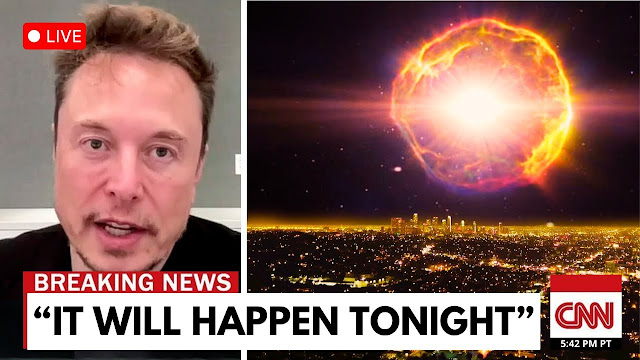For years, scientists and stargazers alike have been
fascinated by Betelgeuse, the reddish star glowing ominously in the shoulder of
the Orion constellation. But now, the excitement has reached fever pitch:
Betelgeuse might be on the brink of a supernova explosion, and if it happens,
the night sky could be forever changed—for weeks, or even months.
A Star Nearing the End
Betelgeuse is a red supergiant, one of the largest
types of stars in the universe. Located around 642 light-years from Earth, it’s
hundreds of times larger than our Sun and tens of thousands of times brighter.
But its brilliance is a sign of its age—Betelgeuse is dying.
Massive stars like Betelgeuse don’t go quietly. When
they run out of fuel, they collapse under their own gravity before rebounding
in a titanic explosion known as a supernova. This blast is one of the most
powerful events in the universe, outshining entire galaxies for a short time.
Strange Behavior Sparks Speculation
In late 2019 and early 2020, astronomers noticed
Betelgeuse dimming dramatically—by more than 60% of its usual brightness. This
sparked global speculation that the star’s final explosion was imminent. Though
it later recovered its shine, researchers confirmed that something unusual had
happened: a giant plume of gas and dust, likely caused by a surface eruption,
temporarily blocked its light.
Since then, Betelgeuse has continued to act strangely,
pulsing in brightness and even rotating faster than expected. Some scientists
believe these are signs that the supernova may happen sooner rather than
later—possibly within our lifetime.
What Happens If It Explodes?
If Betelgeuse goes supernova, the explosion will be
visible from Earth—even during the daytime. For several weeks, maybe even
months, it could shine as brightly as a full moon, becoming a prominent object
in both the night and day sky. Imagine looking up and seeing a second “sun”
glowing red or white where Orion once was.
This spectacle would be completely safe for Earth. At
over 600 light-years away, the blast would not harm us physically. There would
be no radiation danger, no shockwave, no apocalypse—just one of the most
awe-inspiring light shows our species has ever witnessed.
A Rare Cosmic Event
Supernovae in our own galaxy are extremely rare. The
last one visible to the naked eye happened in 1604, and before that in
1054—events that were recorded by ancient astronomers around the world. A
Betelgeuse explosion would be the first of its kind in the modern era of
telescopes, satellites, and smartphones.
Astronomers are on high alert. Observatories across the
globe—and even in orbit—are monitoring Betelgeuse’s every flicker. When the
explosion comes, it will offer an unprecedented opportunity to study the life
and death of stars in real time.
When Will It Happen?
Here’s the catch: no one knows for sure. Betelgeuse
could blow tomorrow, next year, or a hundred thousand years from now. In cosmic
terms, that’s the blink of an eye—but for us, it could be a long wait.
Still, the star’s recent activity suggests that
something is happening beneath the surface. Whether it’s a prelude to a
supernova or just more cosmic drama from a dying giant, one thing is certain:
Betelgeuse is keeping astronomers on their toes—and the world watching the
skies.
Keep Looking Up
If Betelgeuse does explode in our lifetime, it will be a once-in-a-civilization event—an unforgettable moment that reminds us just how dynamic, violent, and beautiful our universe truly is. Until then, look toward Orion’s shoulder on a clear night. That reddish twinkle? It might just be the next great cosmic firework, waiting to go off.


.jpg)


0 Comments